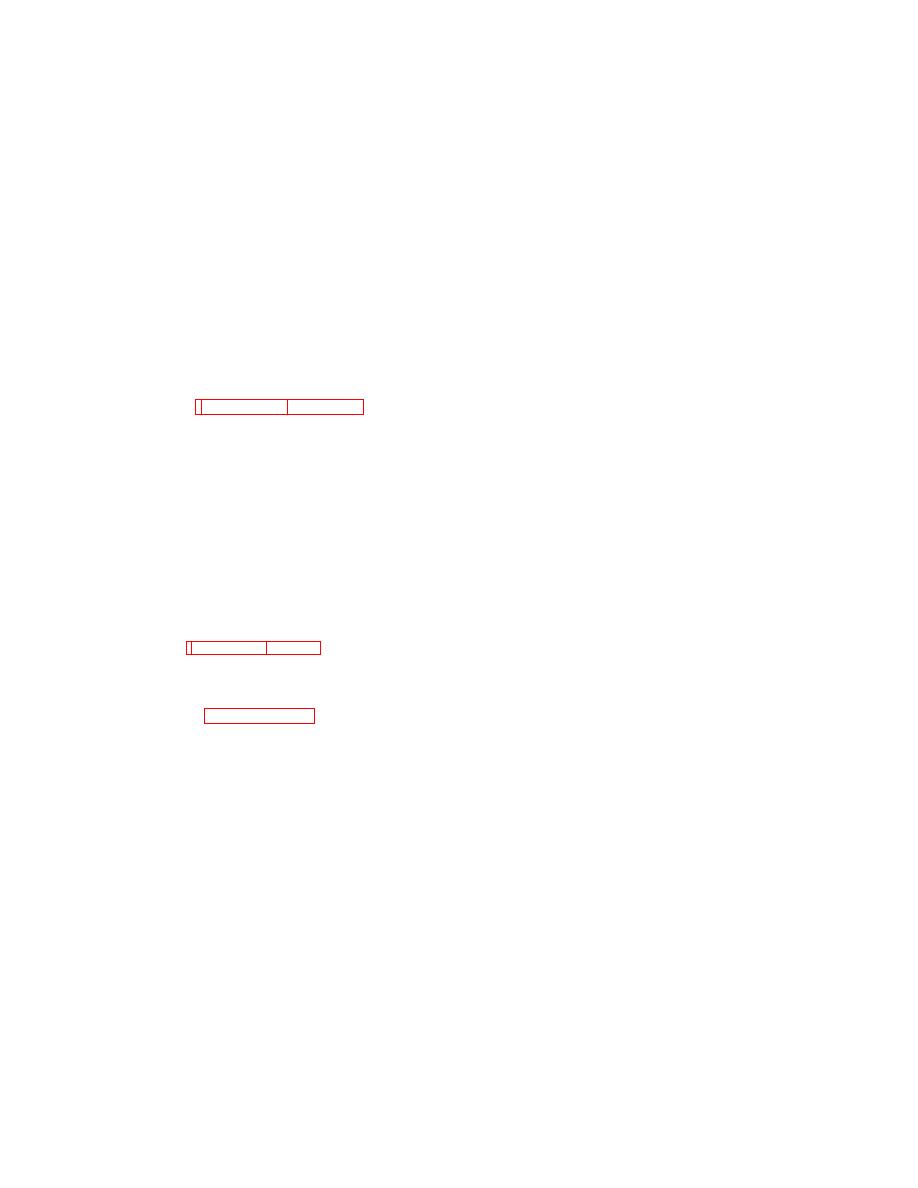
| Tweet |

Custom Search
|
|

|
||
 TM 55-1905-217-12
lobes at some point or perhaps allow the rotor
(3) Actuate the valve with the cable to
assemblies to rub the blower housing. This condition will
distribute the oil on the cable and allow the oil to run
usually show up at the end where the bearings have
down through the valve.
failed.
(4) Remove any dirt from the orifice by
(5) Excessive back-lash between the blower
removing the air inlet housing fitting, the orifice block and
timing gears usually results in the rotor lobes rubbing
the screen, and then blow air through the orifice end
throughout their entire length.
only.
(6) To correct any of the above conditions, the
(5) Assemble and tighten the air inlet housing
blower must be removed from the engine and repaired or
fitting to the actuator valve and tube.
replaced. Refer to higher maintenance level.
(6) Check for leakage of fluid (fogging) on the
outside of the engine air inlet housing by actuating the
starting aid while the engine is stopped. If fogging
4-38.
Starting Aid - Pressurized Cylinder
occurs, disassemble and retighten the air inlet housing
fitting to the housing.
a. General. All craft are equipped with the same
type starting aid although they are mounted and actuated
WARNING
differently. The craft all have the starting aid mechanism
connected to the air inlet housing of the blower with a
Do not actuate the starting aid more than once with the
small metal tube. See figures 2-6.1 and 4-41.1.
b. Service. Periodically perform the following
engine stopped. OVER-LOADING THE ENGINE AIR
BOX WITH THIS HIGH VOLATILE FLUID COULD
service items to assure good performance:
RESULT IN A MINOR EXPLOSION.
(1) Remove the fluid cylinder and lubricate the
valve around the pusher pin under the gasket with a few
(7) Check the fluid cylinder for hand tightness.
drops of oil.
(2) Lubricate the actuator cable.
SECTION XI. ENGINE EXHAUST SYSTEM
4-39.
General
4-40.
Mufflers
a. Removal.
Each engine has a separate exhaust system consisting
of exhaust manifold, exhaust elbow, exhaust pipes, and
(1) Disconnect sea water connection to
muffler as shown in figure 4-33 or 4-34. The exhaust
muffler.
manifold is water cooled from the engine cooling system,
(2) Remove bolts attaching muffler to exhaust
the exhaust pipes are covered with insulation, and the
pipes.
muffler is water cooled with water pumped by the sea
(3) Remove bolts attaching muffler to support
water system. Refer to paragraph 4-22 for description
brackets.
b. Installation. Install muffler in reverse order of
and removal of the exhaust manifold.
removal.
4-36
|
||
 |
||